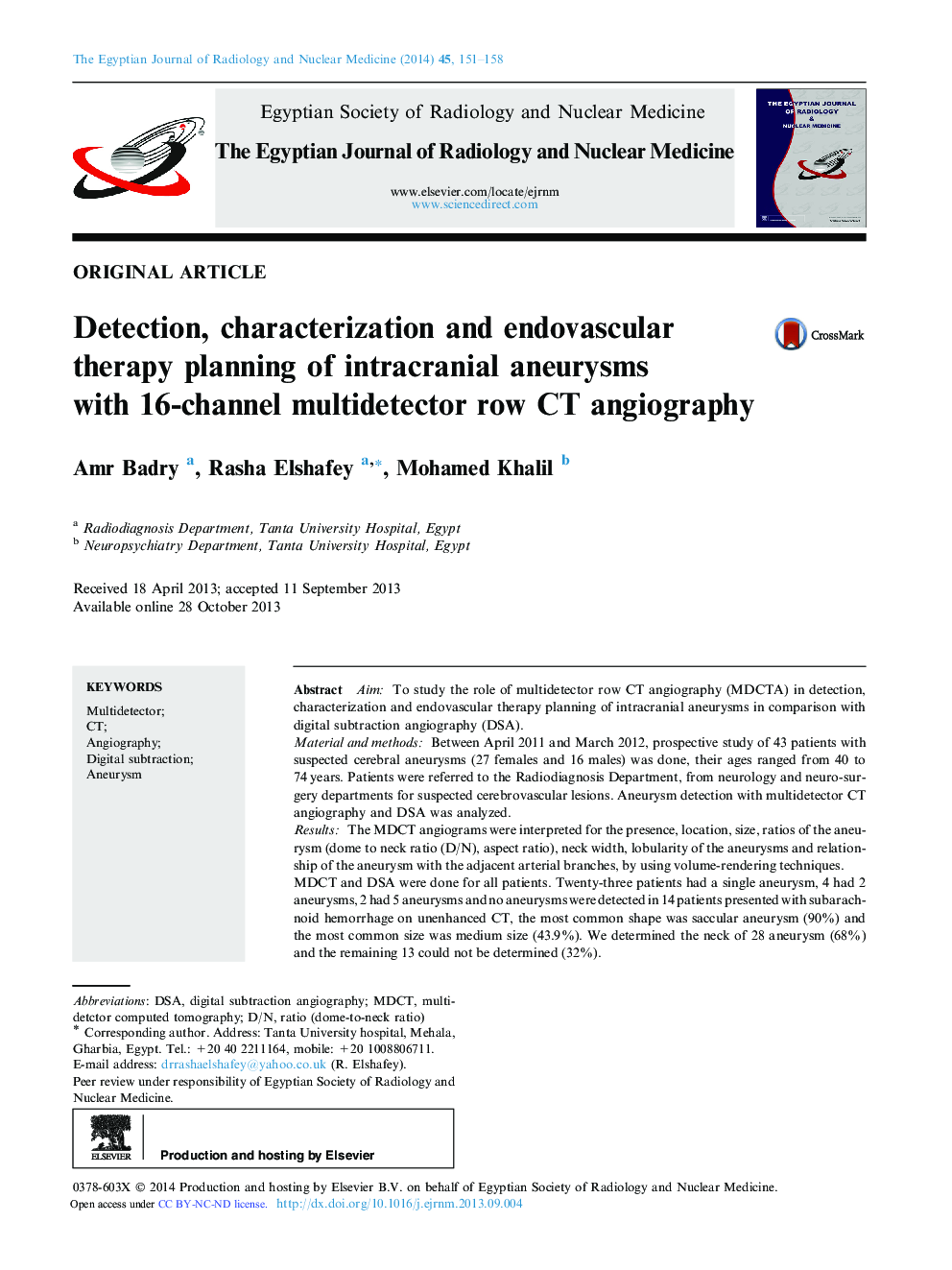| Article ID | Journal | Published Year | Pages | File Type |
|---|---|---|---|---|
| 4224389 | The Egyptian Journal of Radiology and Nuclear Medicine | 2014 | 8 Pages |
AimTo study the role of multidetector row CT angiography (MDCTA) in detection, characterization and endovascular therapy planning of intracranial aneurysms in comparison with digital subtraction angiography (DSA).Material and methodsBetween April 2011 and March 2012, prospective study of 43 patients with suspected cerebral aneurysms (27 females and 16 males) was done, their ages ranged from 40 to 74 years. Patients were referred to the Radiodiagnosis Department, from neurology and neuro-surgery departments for suspected cerebrovascular lesions. Aneurysm detection with multidetector CT angiography and DSA was analyzed.ResultsThe MDCT angiograms were interpreted for the presence, location, size, ratios of the aneurysm (dome to neck ratio (D/N), aspect ratio), neck width, lobularity of the aneurysms and relationship of the aneurysm with the adjacent arterial branches, by using volume-rendering techniques.MDCT and DSA were done for all patients. Twenty-three patients had a single aneurysm, 4 had 2 aneurysms, 2 had 5 aneurysms and no aneurysms were detected in 14 patients presented with subarachnoid hemorrhage on unenhanced CT, the most common shape was saccular aneurysm (90%) and the most common size was medium size (43.9%). We determined the neck of 28 aneurysm (68%) and the remaining 13 could not be determined (32%).Among 41 cerebral aneurysms, 26 aneurysms were detected in anterior circulation (63.4%) and 15 in posterior circulation (36.5%). The middle cerebral artery (29.2%) was the most common site.In 55% of studied cases presented with aneurysmal rupture SAH was the commonest type of hemorrhage. According to Hunt and Hiss classification grades 2 and 3 were the most prevalent (17 patients and 6 patients respectively) followed by grade 4 (4 patients) and lastly grades 0 and 1 (one patient for each).ConclusionSixteen channel Multidetector CT angiography offers high diagnostic accuracy nearly equivalent to that of DSA in the detection of intracranial aneurysms. However, 16 channel- MDCTA still has limited sensitivity in detecting aneurysms of 3 mm or less, despite its technical advances. MDCT can be used as a reliable alternative imaging technique to DSA in selected cases.
